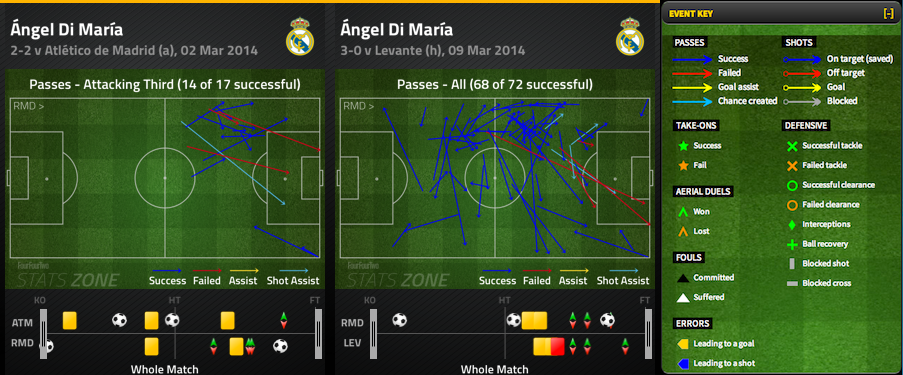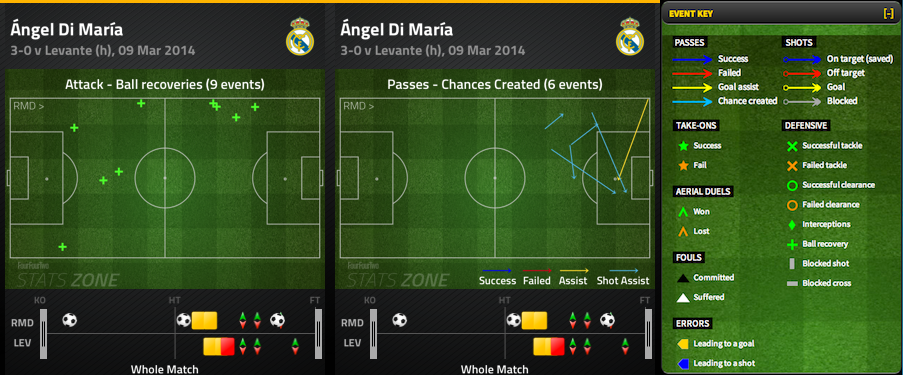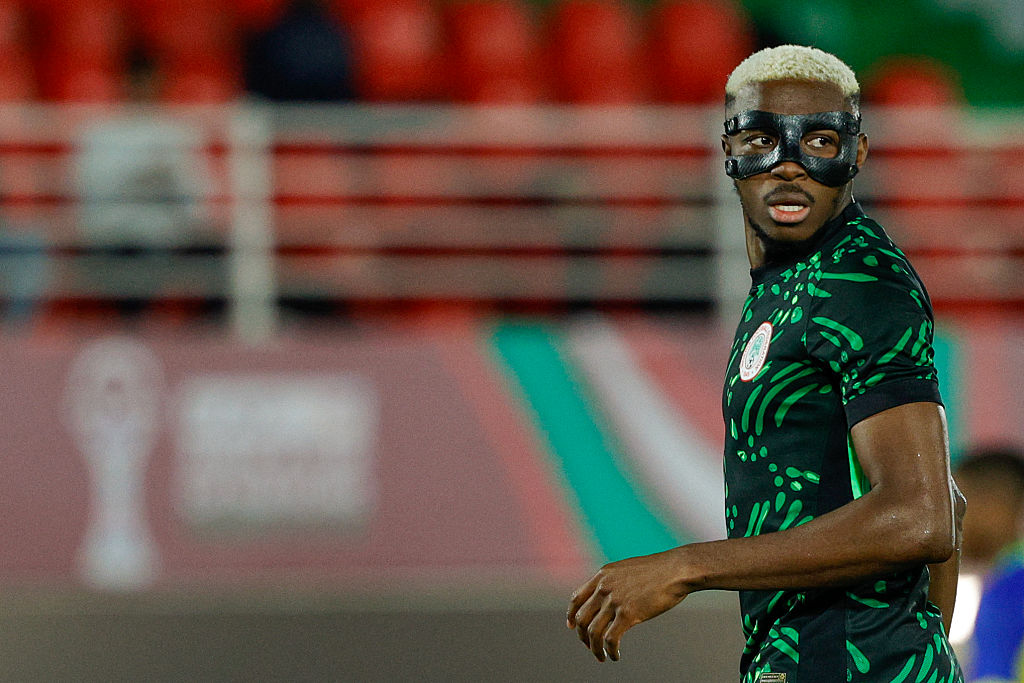How Angel di Maria went from England-bound castaway to key man at Real Madrid
Ahead of Sunday's El Clasico, Paul Wilkes looks at Angel di Maria's resurgence into a key player for Carlo Ancelotti's Real Madrid...

When Gareth Bale became the latest 'Galactico' at Real Madrid last summer, it was largely expected that Ángel di María would be the one to make way. The Argentine held down the inverted right-winger position that Bale now occupies and there were rumours that the club hierarchy were happy to sell, with Arsenal, Tottenham and Manchester City all supposedly keen on taking him to the Premier League.
The sale of Mesut Özil to the Gunners on the final day of the summer transfer window meant that Di María survived for another year, but it was still deemed unlikely that he would gain a regular starting role.
Carlo Ancelotti changed formation continuously in his opening few months at Madrid, though 4-2-3-1 was his predominant selection. When Bale played, Di María didn't. When the wide man did start, it was out on the right; he was essentially an under-study to the world's most expensive player.
The brilliant form of young Isco complicated matters further; if Ancelotti wanted a 'number 10' then it was the former Málaga man who would be selected.
The best features, fun and footballing quizzes, straight to your inbox every week.
Injuries to both Bale and Cristiano Ronaldo meant that Di María was still able to clock up plenty of game time, while Ancelotti used his now custom 4-3-3 a little more. Against Real Sociedad, Ancelotti was able to field a midfield three of Xabi Alonso, Sami Khedira and Luka Modrić for the first time. Real Madrid were 3-0 up within 30 minutes, eventually winning the match 5-1. Khedira was then cruelly ruled out for the rest of the season, whilst on international duty for Germany.

Ancelotti initially decided the 4-2-3-1 was the best option without Khedira, but away victories over Espanyol and Real Betis with Di María on the left of a midfield three caused a rethink. "Yes, for the moment we will keep playing with the 4-3-3 formation," said the Italian in a press conference. "It gives us a good balance because all of our three midfielders work well enough."
Asier Illarramendi and Casemiro are other midfield options, but both are better suited to breaking up the play and making simple passes. With Alonso and Modrić already in the centre Ancelotti wants someone with energy, drive and athleticism. With Di María as a central midfielder, Ancelotti has the right blend.
An injury, a tactical switch... a new Di Maria
The tactician revealed how he now views Di María, when trying to explain how is struggling to fit Isco into the side. "It's true that Isco doesn't fit this system that well. He can play in Di María or Modrić's spot, but he's not as comfortable there," said Ancelotti.
The adaptation shouldn't have been that surprising; it's a role that Di Maria is already familiar. At Benfica, he would regularly feature on the left-hand side of Jorge Jesus' midfield diamond. On the right were Chelsea's Ramires and Manchester City's Javi Garcia in the holding position.
"Angelito is the best in the world in his position and is still very young," said Benfica manager Jesus, shortly after he left for Spain. "I taught him many things tactically."
That tactical flexibility is illustrated in the way he positions himself throughout matches. With Ronaldo cutting inside, he drifts out to the flanks to provide width and crosses. His directness and pace causes opposing midfielder's problems if they don't track his late runs into the box.
Alonso and Modrić are two of the best passers in world football, while Di María provides movement and thrust in the central zone. His ability to beat a player is also important, as it's a characteristic that his midfield partners don't tend to display.

As you can see by the completion rates above, Di María's passing is also improving as he gets a run of games in the centre. He loves a long-range diagonal pass and as a winger he is always looking to bring them into the game. Hovering around the edge of the area, his sweet left foot tests numerous goalkeepers.
His vertical style helps penetrate defences, either through a key pass or by carrying the ball and committing players. He is punishing the smaller teams, but equally performing in the bigger matches. It's now six assists and one goal in his last seven starts as a central midfielder, including a man of the match performance against Atlético in the Copa Del Rey.

Off the ball, he is even more influential. Di María is very clever at finding space. If that can't be found in the centre of the pitch, then he often drifts out to the flanks to receive possession. Not particularly adept at tackling, he presses and harasses the opposition into making mistakes.
Against a side like Barcelona, he is vital when attempting to win the ball back and then spring a counter attack. He doesn't possess the physicality of Khedira, but it's his work-rate and mobility that sees him given the job.
Political reasons could yet see the South American leave in the summer. The club are happy to cash in on Di María and club president Florentino Pérez wants to see more of Isco, according to a report in Mundo Deportivo. An alleged gesture by Di María to the home crowd in January hasn't helped matters, whilst there's a feeling on the board that performances drop once he has signed a new contract.
Ancelotti doesn't share this view and will try to argue his point. His versatility and tactical awareness for numerous positions is an important aspect of this squad. If it's solely down to football logic, then Di María will still be at the Bernabéu next season. But things are never that simple at Real Madrid.
